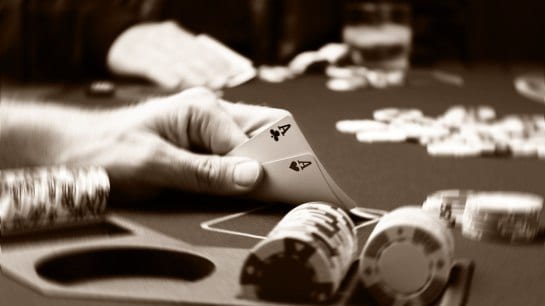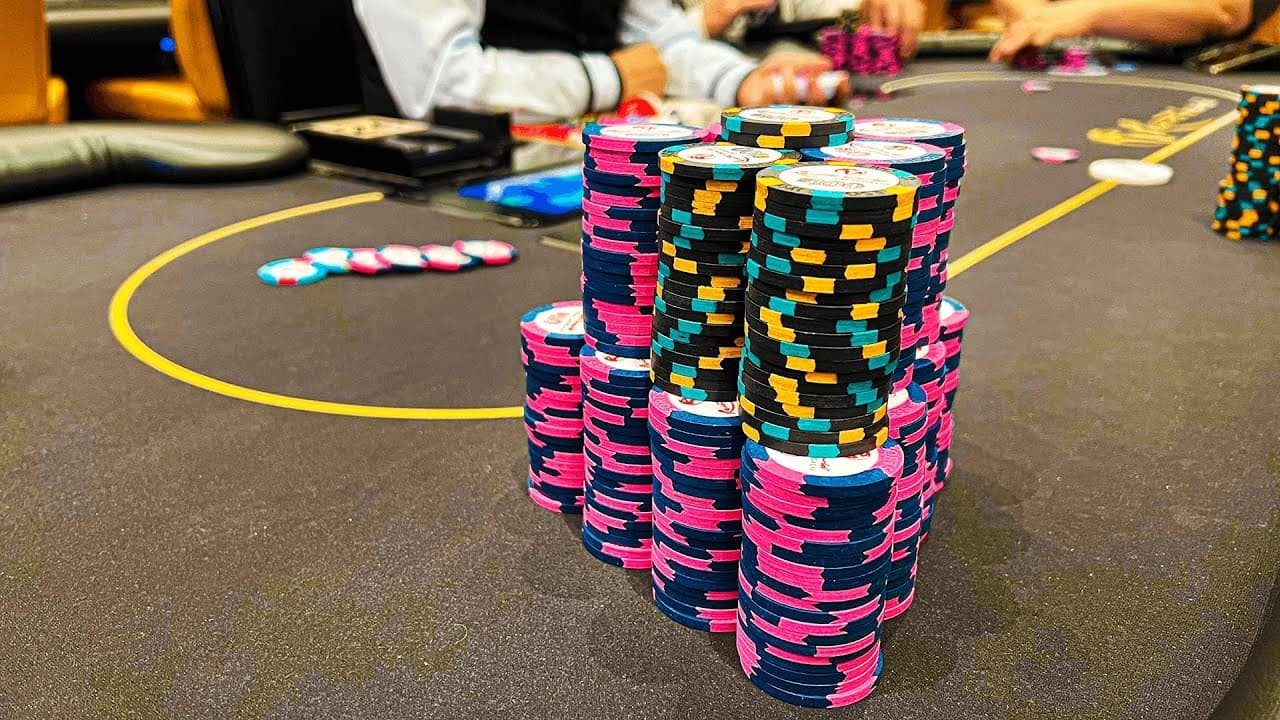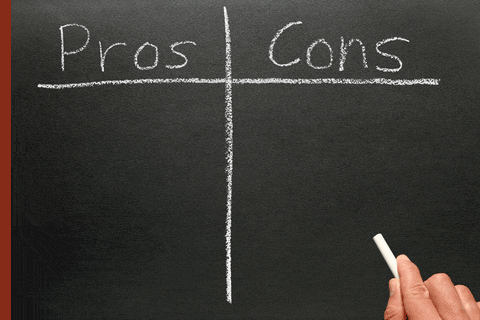
Mastering the Straddle: A Key Poker Strategy
For most playing live poker, “straddle” is one of those strategies that makes or breaks one’s game, depending on how well a player understands or uses it. To the uninitiated, straddling may just be no more than a variant of gambling or raising the action just for kicks.
In the right, experienced hands and at the right, opportunistic times, the straddle is an excellent weapon that will manipulate pot size, get positional advantageous, and keep the table dynamics under control.
In this article, we get into the nitty-gritty of the straddle: the mechanics, nuance, and strategic implications involved with the straddle so that you can make sure to use it in the right situations to maximum effect for maximum win rate.
What Is a Straddle?
The most generalized version is that a straddle is an optional, voluntary blind bet in advance of the issue of the cards, normally to the player to the immediate left of the big blind-that would be the under-the-gun, UTG-position-and generally speaking, the bet is doubled in size to the big blind. What does this do? It ups the ante in this game, meaning one should get a better and more positional pre-flop play.
But with a number of straddles and their strategic consequences, this seemingly straightforward concept also reaches high levels of sophistication.
A straddle bet itself is a live bet, and after being made by a player, the moment the action reaches him preflop, he may act as if that were the big blind. Generally speaking, even position dynamics change the dynamics radically in the game, where many people wish to chase bigger pots created by the straddle.
Types of Straddles: Not Just the UTG

While the Under-the-Gun (UTG) Straddle is the most common, it’s far from the only version of the straddle you’ll encounter in poker. Depending on the game or house rules, there are several variations:
- UTG Straddle: This is when the player to the immediate left of the big blind makes the straddle bet. Such a straddle binds action to continue clockwise from the next player, after which UTG acts last pre-flop.
- Button Straddle: The rules of some Hold’em variations allow even a button-a player of the most powerful poker position-to put a straddle on. In this case, he will be able to act last in both preflop and post-flop rounds. Of course, button straddle would be much more attractive with its enormous positional value that may allow the straddler to put pressure on his opponents, especially weaker ones, and control the action.
- Mississippi Straddle: Some version of this is played mainly in some home games or casinos where any player at the table has the option to make the straddle. The Mississippi straddle doesn’t depend on your seat and is usually on the button or cutoff, which hugely amplifies the positional benefits when compared to the UTG straddle.
Each of these straddles brings different dynamics into the game, and knowing how to exploit those nuances is basically the key to executing this tactic for maximum value.
How straddling changes the game

To understand why players straddle, let’s first break down what happens when a straddle is placed:
- Larger Pot Size: A set straddle will increase the size of the pot pre-flop, even before the cards are dealt. In this case, it grows into a larger pot size, attracting more action. More players will now look toward calling or raising with more speculative hands because there is already more money in the middle.
- Different Dynamics Pre-flop: In case a person straddles, the dynamics get different. The one who has straddled will have an advantage in seeing what other people decide by being the last to act during a preflop betting round, so that he himself can decide how to act. This is pretty valuable in loose games where people like to limp or make weak raises, which enables the straddler to put pressure with stronger ranges.
- Opponent Range Building: Generally speaking, players need to open wider because of the bigger pot size. In other words, with the straddle, it’s kind of a snowball effect: more money in the middle of the table, more players feel it’s worth taking a gamble with marginal hands, and thus both the preflop raise and call range are going to be wider and weaker.
Pros and Cons of Straddling: Understanding the Trade-offs

Straddling has its own pros and cons just like any other poker strategy: That’s good enough for making big pots and gaining positional power, yet it is equally bad when wrongly used.
Pros:
- Positional Advantage Preflop: In all the variants of poker, position is arguably among the strongest advantages you can have. Thus, by straddling, you take what would otherwise be in under-the-gun a very weak position and strengthen it since you will only act last in the pre-flop round.
- Encouraging Action: By allowing your opponent to be more aggressive in case of increasing the size of a pot at an early stage, players in these cases, normally constituting tight ranges, may open up if there is more to win and hence commit some mistakes that then can be exploited by you.
- Larger Pots, Bigger Wins: Straddling naturally leads to bigger pots, and if you are good, then much bigger possible wins. This is most true in cash games, where your goal is to maximize profit per hand. Good players straddle for this reason-to bait worse players into playing more expensive hands than they’re comfortable playing.
Cons:
- Overexposure: Possibly the greatest drawback of limping is that you’re contributing cash to the pot blind-not knowing what your cards are. This creates situations whereby you almost can’t help but be put onto playing speculative hands, which may result in money loss before a single card’s view.
- Much Tougher to Play Post-Flop: You are committing more money to the pot when you straddle. It commits you to more difficult post-flop plays like very large pots where even marginal hands feel worth continuing but really aren’t.
- Encouraging Wild Card Play: Since wild card games generate money by their nature, one can say that straddling encourages this kind of play. More money in the pot preflop tends to encourage looseness from your tablemates, and even when you play perfectly, variance can obviously work against you in the short term.
Straddle Strategy: When to Apply It

Not every game or situation is right to straddle in, and learning when to utilize this tool will highly increase the value of the tool.
- Soft Games with Passive Players
Similarly, the Straddle-forces others out of their comfort zone when most of the table is playing too passively. The tendency in this regard is to fold in many spots or to limp into pots, and thus you will have ample opportunities to come over the top aggressively. You’re just making your opponents make tough decisions in spots with generally weaker hands by straddling in these situations.
- When You Have a Positional Superiority
A button or Mississippi straddle is very powerful, especially in those games where people are not that aware of positional dynamics. It is a colossal advantage to be in position to act last both preflop and postflop. You can put maximum pressure on them, and by the acting of them, you’ll know how to go on with your hand.
- Change table dynamics
If the game has been slow and you’re looking to shake things up, a straddle can inject action and change the rhythm of play. This is particularly useful when you’re playing with tighter opponents who need to be coaxed into putting money into the pot. Straddling can disrupt their cautious play and force them to engage in bigger pots.
When Not to Straddle
Even while straddling has its advantages, there appear to be circumstances under which one best avoids it:
- Against Aggressive Players
It is terribly possible that super aggressive players are going to make the pre-flop action heavy with the straddle, multiple raises, and multiple re-raises. You find yourself in tough spots with marginal hands where you are going to be forced to commit more chips than you may want to.
- Short-Stacked Play
Generally, it is highly-risky to straddle on a short stack. Often you are going to be P/C after the flop and that is going to tempt you to play some hands that you really should fold. It’s much better to save your limited stack for stronger hands.
- Tournament
Unlike in cash games, where survival of chips is the motto, in a tournament, there’s simply no point in straddling, which just invites on some unnecessary risk. Generally speaking, with volatility considered, it is often better to play tight and commit chips only when necessary.
Conclusion: Straddling as a Tactical Weapon
Effective, the well-played straddle is a powerhouse in poker play: it allows for pot size control, punishes opponent weakness, and establishes positional authority. But it is a two-edged sword, and as with any advanced tool, deep knowledge in game dynamics and player tendencies is needed for its use.
You really need to understand the possible risks and rewards involved before making the straddle a big part of your play. Employed judiciously and precisely, this kind of raise will get you ahead in pots that would otherwise be uncontested. Remember, timing and context are everything in poker. Straddle smart, and you’ll find yourself at one of those tables where everybody else is playing your game.
